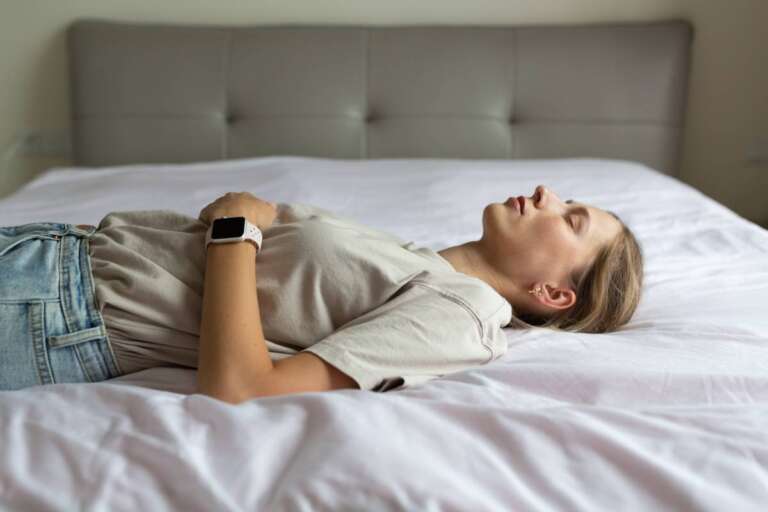Stress urinary incontinence (SUI) is a condition that affects many people, particularly women, and is often triggered by physical activity, coughing, sneezing, or even laughing. For those living with this condition, the fear of leakage can limit daily activities and decrease overall quality of life.
While the causes of SUI can vary, including childbirth, age, and hormonal changes, there are effective ways to manage and improve symptoms. One of the most promising and accessible methods is exercise.
But how exactly does exercise help? Can it really reduce or prevent urinary incontinence? This article will explore the role of exercise in managing stress urinary incontinence, how stress itself contributes to this condition, and practical strategies to stop or minimize urinary leakage during physical exertion.
How Exercise Helps Stress Incontinence
The primary treatment for stress urinary incontinence often involves strengthening the pelvic floor muscles.
These muscles support the bladder, uterus, and rectum. When they are weak, they cannot provide adequate support for the bladder, leading to involuntary leakage during activities that increase abdominal pressure, such as lifting heavy objects, exercising, or laughing.
Pelvic floor exercises, also known as Kegel exercises, are specifically designed to target these muscles. Regular practice of Kegels can help:
Increase Muscle Strength and Endurance:
Kegels involve contracting and relaxing the pelvic floor muscles, similar to how you would control the flow of urine. By strengthening these muscles, individuals can regain better control over their bladder and reduce the frequency of leaks.
Improve Muscle Coordination:
Kegels help improve the coordination of the pelvic floor muscles, ensuring they are able to contract effectively when needed. This coordination is crucial in preventing urine leakage when physical stress is applied to the bladder.
Enhance Support for the Bladder:
The pelvic floor muscles provide support to the bladder, and when they are strengthened, they can help prevent the bladder from becoming too vulnerable to pressure.
Can Stress Cause Urinary Incontinence?
Stress, both physical and emotional, can contribute to urinary incontinence. Stress urinary incontinence is triggered by physical exertion, such as running, jumping, or sneezing, which puts pressure on the bladder.
Emotional stress can also indirectly affect bladder function by causing muscle tension and increased sensitivity to bladder signals. Chronic stress may lead to greater urgency or leakage during emotional strain.
Additionally, stress can disrupt hormone regulation, further weakening pelvic floor muscles and affecting bladder control, particularly in women during menopause or stressful periods.
Physical Stress and Urinary Incontinence
Physical stress, such as exertion from exercise or sudden movements like coughing or sneezing, puts pressure on the bladder, triggering stress urinary incontinence.
Emotional Stress and Bladder Function
Emotional stress can cause muscle tension and make the bladder more sensitive, leading to increased urgency or leakage during times of emotional strain.
Hormonal Impact on Stress Urinary Incontinence
Chronic stress can disrupt hormone regulation, particularly during menopause, weakening pelvic floor muscles and impairing bladder control.
This format allows the content to be more digestible and better highlights the different ways stress impacts urinary incontinence.
How to Stop Urinary Stress Incontinence
While exercise is an essential part of managing and improving Stress Urinary Incontinence, there are other methods and lifestyle changes that can help individuals regain control over their bladder function. Here are a few strategies that can help:
Pelvic Floor Exercises (Kegels):
As mentioned earlier, pelvic floor exercises are one of the most effective treatments for stress urinary incontinence.
Regularly practicing Kegel exercises, which involve contracting and relaxing the muscles that control urine flow, can help strengthen these muscles and improve bladder control. Aim to do these exercises at least three times a day for 10-15 repetitions per session.
- Bladder Training: Bladder training is a technique used to help individuals gradually increase the time between urination, which can improve bladder control. This training involves scheduling bathroom visits and resisting the urge to urinate in between. Over time, this helps to train the bladder to hold urine for longer periods, reducing the likelihood of leakage during stress.
- Lifestyle Changes: Certain lifestyle modifications can help reduce the frequency of urinary incontinence. These include:
- Maintaining a healthy weight: Excess weight can put pressure on the bladder, worsening stress incontinence. Losing weight through regular exercise and a balanced diet can help alleviate this pressure.
- Avoiding bladder irritants: Caffeine, alcohol, and acidic foods can irritate the bladder and exacerbate incontinence. Reducing or eliminating these from your diet may improve symptoms.
- Staying hydrated: It might seem counterintuitive, but drinking enough water is crucial. Dehydration can cause urine to become concentrated, which can irritate the bladder and lead to more frequent urges.
- Maintaining a healthy weight: Excess weight can put pressure on the bladder, worsening stress incontinence. Losing weight through regular exercise and a balanced diet can help alleviate this pressure.
- Physical Therapy: For individuals who struggle with more severe cases of stress urinary incontinence, working with a pelvic floor physical therapist may be beneficial. These specialized professionals can assess the pelvic muscles and provide targeted exercises and techniques to strengthen and rehabilitate these muscles.
- Medical Treatments: In some cases, medical treatments may be necessary. Options include:
- Medications: Certain medications can help manage incontinence by relaxing the bladder or tightening the sphincter muscles to prevent leakage.
- Pessaries: For women, a pessary is a device that is inserted into the vagina to provide support to the bladder and reduce leakage.
- Surgery: In extreme cases, surgical procedures may be considered. Sling surgery, for example, involves the placement of a small mesh sling around the urethra to support it and prevent leakage.
- Medications: Certain medications can help manage incontinence by relaxing the bladder or tightening the sphincter muscles to prevent leakage.
- Mind-Body Techniques: Reducing emotional stress is also important for managing urinary incontinence. Stress-relief techniques such as mindfulness, meditation, and yoga can help reduce overall tension in the body and promote better bladder control. Mind-body practices focus on relaxing the pelvic muscles, which may help ease symptoms of stress urinary incontinence.
- Avoiding High-Impact Activities: While exercise can be helpful in managing stress urinary incontinence, high-impact exercises such as running or jumping can exacerbate symptoms. Instead, opt for low-impact exercises such as walking, cycling, or swimming to reduce pressure on the bladder while still staying active.
Conclusion
Stress urinary incontinence (SUI) is a common condition that can result from physical exertion, emotional stress, or both.
Fortunately, it is manageable through lifestyle changes, pelvic floor exercises, and medical treatments. Regular exercise, such as Kegel exercises, bladder training, and maintaining a healthy weight, can significantly improve bladder control and quality of life.
For personalized guidance, consult a healthcare provider or pelvic floor specialist to create a tailored treatment plan.
With the right approach and support, individuals can transform their body, improve bladder control, and manage SUI effectively.








Leave a Comment